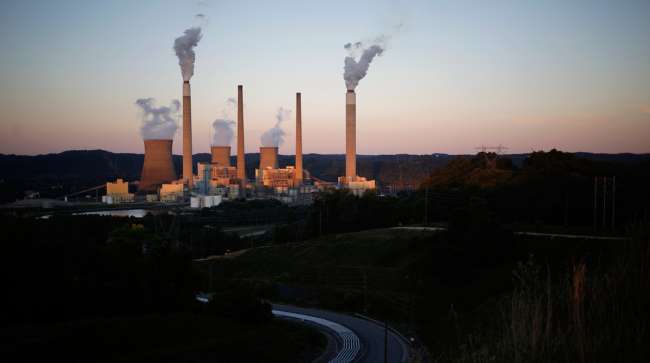Supreme Court Greenlights EPA’s Power Plant Emission Rules

[Stay on top of transportation news: Get TTNews in your inbox.]
The U.S. Supreme Court let the Environmental Protection Agency move ahead with its stringent new emissions limits for power plants, rebuffing businesses and Republican-run states that complained the rules will impose exorbitant compliance costs.
The high court order is a major boost for Biden administration efforts to tackle climate change through new regulations on an industry that accounts for about a quarter of the country’s greenhouse gas emissions. Justice Clarence Thomas dissented.
Opponents, including trade groups and companies in the power and mining industries, were seeking to halt the rules while a legal challenge goes forward at a federal appeals court and, in all likelihood, the Supreme Court. A delay might have pushed the deadlines back by two years.
But the court was persuaded by President Joe Biden’s administration, which argued that delaying the rules would “cause irreparable harm to the government and the public by permitting irretrievable emissions of carbon dioxide in the meantime.”
Want more news? Listen to today's daily briefing above or go here for more info
A group led by Edison Electric Institute, which represents utilities, said companies would have to “spend many millions of dollars and make irreversible choices among compliance options now” unless the rule was blocked.
The EPA called that an exaggeration, saying compliance costs will be minimal in the early going.
States led by West Virginia, the second-largest U.S. coal producer, told the justices that the EPA was making a mistake by attacking fossil-fuel generation. “Fossil fuels are essential to safely transition the grid to a higher percentage of renewables,” the 25-state group argued.
The Supreme Court’s conservative majority had previously thwarted efforts by Democratic administrations to shift the nation’s electricity sector away from fossil fuels and toward renewables. The court blocked then-President Barack Obama’s Clean Power Plan in 2016 and ruled in 2022 that the plan exceeded the EPA’s authority.
The latest regulation was a response to the court’s 2022 ruling, with the EPA saying it is now relying on its traditional regulatory approach of requiring companies to adopt the best available technologies.
McLeod Software CEO Tom McLeod explores the potential for artificial intelligence to boost efficiency and build resilience. Tune in above or by going to RoadSigns.ttnews.com.
As issued in April, the regulation would force the nation’s existing coal-burning plants to capture nearly all of their carbon dioxide emissions by 2039 and would compel similar pollution cuts for many of the new gas-fired plants built as replacements.
The rules could hasten plant closures at a time when artificial intelligence, data centers and vehicle electrification are driving up demand — a dynamic that critics say would threaten electric reliability.
A federal appeals court in Washington had refused to halt the regulation while a panel of judges considers the industry and state challenges. A ruling is unlikely until next year at that court.
The Supreme Court on Oct. 4 refused to block two other new EPA pollution regulations, one cracking down on planet-warming methane emissions from oil wells and infrastructure and another limiting mercury and other toxic air pollution from coal power plants.
The latest cases are West Virginia v. EPA, 24A95; National Rural Electric Cooperative v. EPA, 24A96; National Mining Association and America’s Power v. EPA, 24A97; Nacco Natural Resources v. EPA, 24A98; Midwest Ozone Group v. EPA, 24A105; Electric Generators for a Sensible Transition v. EPA, 24A106; Edison Electric Institute v. EPA, 24A116; and Ohio v. EPA, 24A117.





